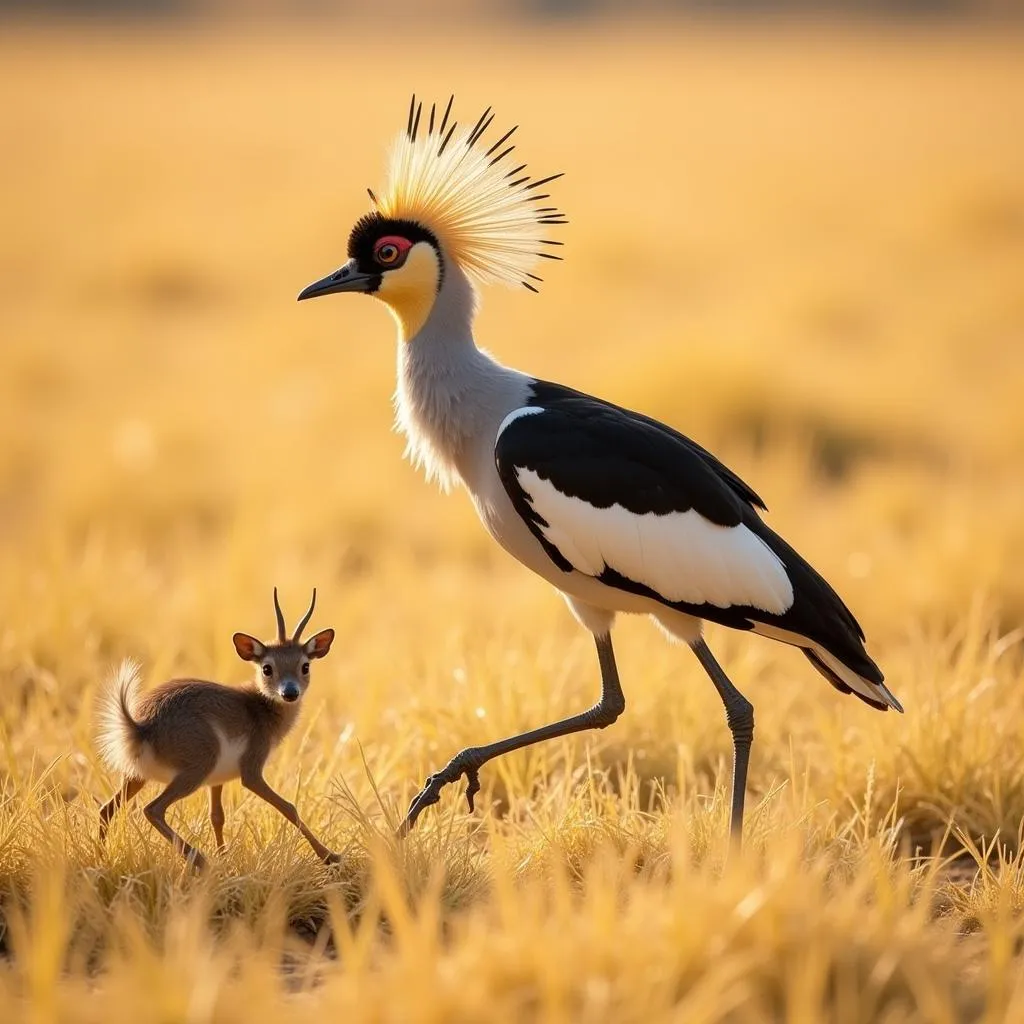African and Asian Birds of Prey: A Comparison of Majestic Hunters
Across the vast continents of Africa and Asia, the skies are ruled by some of the most magnificent creatures on Earth: birds of prey. These avian predators, with their sharp talons, keen eyesight, and powerful flight, play a vital role in their respective ecosystems. While both continents boast a diverse array of raptors, intriguing differences exist between African And Asian Birds Of Prey.
A Tale of Two Continents: Habitat and Adaptation
The contrasting environments of Africa and Asia have shaped the evolution of their birds of prey. Africa, with its expansive savannas, dense rainforests, and arid deserts, is home to raptors adapted to a wide range of hunting strategies. The African Fish Eagle, for instance, showcases remarkable adaptation with specialized talons that allow it to snatch fish from water bodies. On the other hand, the Secretarybird stalks across grasslands on long legs, utilizing its powerful feet to strike and kill snakes and other small vertebrates.
Asia, encompassing soaring mountain ranges, lush jungles, and diverse wetlands, presents its own unique challenges and opportunities for raptors. The Himalayan Griffon, a prominent resident of the Himalayas, exhibits adaptations for soaring at high altitudes, while the stealthy Crested Serpent Eagle of Southeast Asian rainforests has evolved specialized hunting techniques for navigating dense vegetation in pursuit of snakes.
 Secretarybird hunting in grassland
Secretarybird hunting in grassland
Diversity in Size and Hunting Techniques
Both continents harbor an impressive variety of raptors, ranging in size and hunting prowess. In Africa, the Martial Eagle reigns supreme, wielding the title of Africa’s largest and most powerful eagle. Its diet consists mainly of birds and mammals, including prey significantly larger than itself. Conversely, the tiny African Pygmy Falcon, despite its diminutive stature, is a formidable hunter of insects and small birds.
Asia showcases equally remarkable diversity. The majestic Golden Eagle, found across Asia, Europe, and North America, demonstrates exceptional hunting skills, often targeting hares, rabbits, and marmots. In stark contrast, the Black-thighed Falconet, a resident of Southeast Asian forests, holds the title of the world’s smallest raptor, relying on insects and small reptiles for sustenance.
 Golden Eagle soaring in a mountainous landscape
Golden Eagle soaring in a mountainous landscape
Cultural Significance: From Reverence to Symbolism
Beyond their ecological importance, birds of prey hold a significant place in the cultural tapestry of both continents. In many African cultures, raptors are revered as symbols of power, freedom, and spiritual connection. The Bateleur Eagle, with its striking plumage and acrobatic flight displays, features prominently in African folklore and traditional beliefs.
Similarly, Asian cultures hold deep-rooted reverence for raptors. The Garuda, a mythical bird-like being in Hinduism and Buddhism, exemplifies courage and divine power. In Mongolia, eagle hunters maintain a centuries-old tradition, training Golden Eagles for hunting, reflecting a profound bond between humans and these magnificent creatures.
Conclusion: Celebrating Avian Majesty
African and Asian birds of prey, though geographically separated, share the common thread of being highly specialized predators with an undeniable aura of majesty. Their diversity, adaptations, and cultural significance offer a captivating glimpse into the intricate web of life on two of the world’s most biodiverse continents. By understanding and appreciating these remarkable creatures, we gain a deeper appreciation for the natural world and our place within it.


